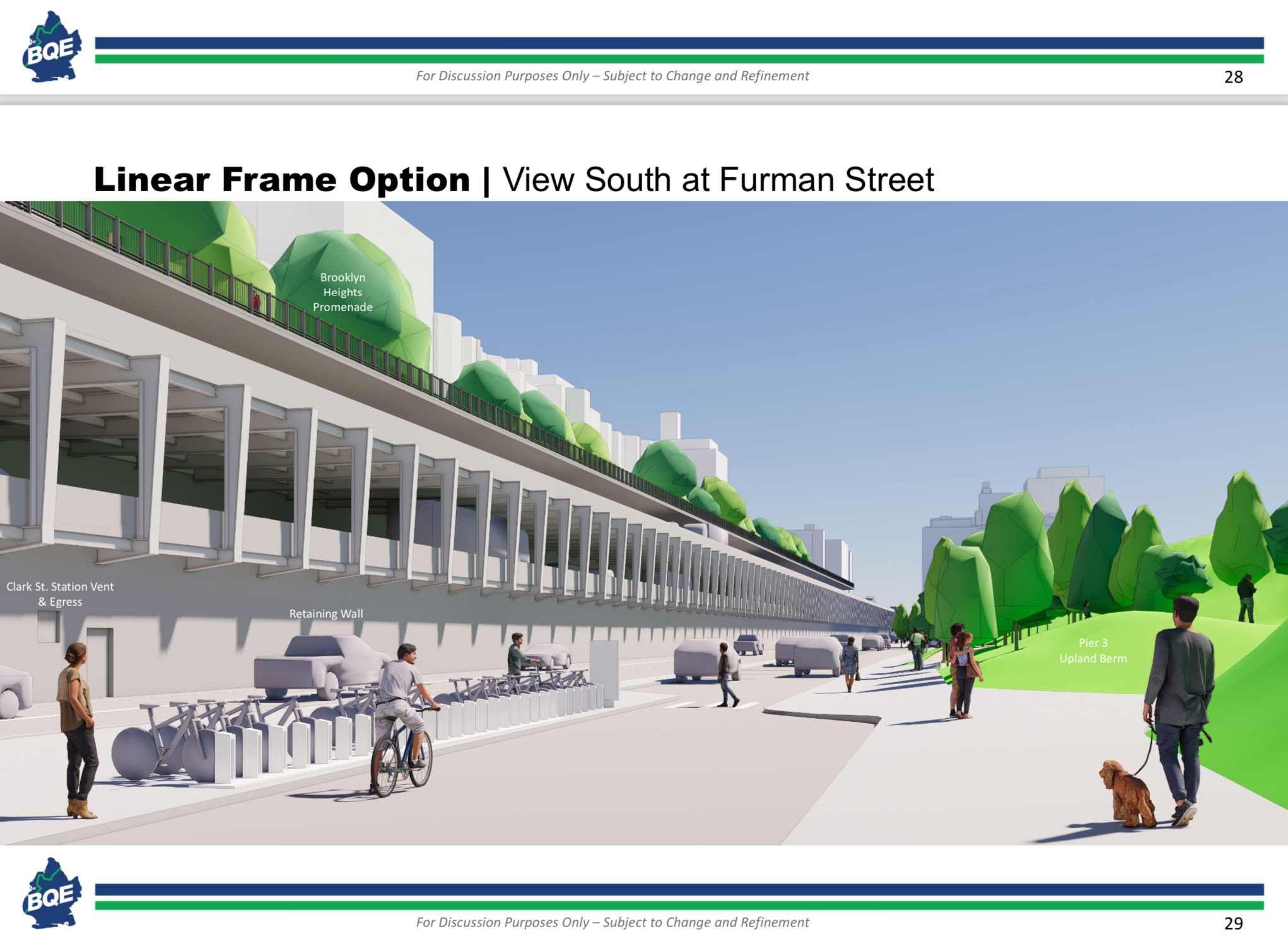A view of one design variation, dubbed “linear” because of the vertical framing, as seen from Furman Street. Graphic: NYC DOT
DOWNTOWN BROOKLYN — Brooklyn residents on Thursday got their first look at a new design idea for rebuilding the Triple Cantilever portion of the Brooklyn-Queens Expressway at a presentation by the NYC Department of Transportation in Downtown Brooklyn.
While the engineering solution appeared an improvement over previous designs, many attendees said so many basic questions were unanswered — including how many lanes the highway will end up having — it was hard to come to any conclusion.
This was the fifth design presented by DOT over several years to replace the crumbling city-owned stretch of highway running from Atlantic Avenue to Sands Street along the Brooklyn Heights waterfront. (The city calls this segment BQE Central.)
The new design, as explained by Julie Bero, DOT’s Chief Strategy Officer, and engineer Michael Stein of schlaich bergermann partner, would replace the current cantilever configuration with stacked levels, squaring up the overall shape.
Modern highways must, by law, be about 20% wider than highways built during Robert Moses’ era, such as the BQE. By stacking the two lower traffic levels (the top level is the Brooklyn Heights Promenade) the new BQE structure would take up roughly the same room as it does currently — assuming it is limited to two traffic lanes in each direction, which is not a given.
If stacked east of Furman Street as proposed, the structure would allow 21-27 feet between the highway and the existing residential building at 360 Furman St., similar to the current distance.
Only the two-lane configuration was illustrated, however. An additional lane in…
Read the full article here

Leave a Reply